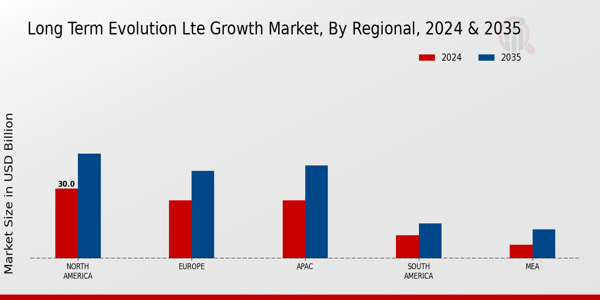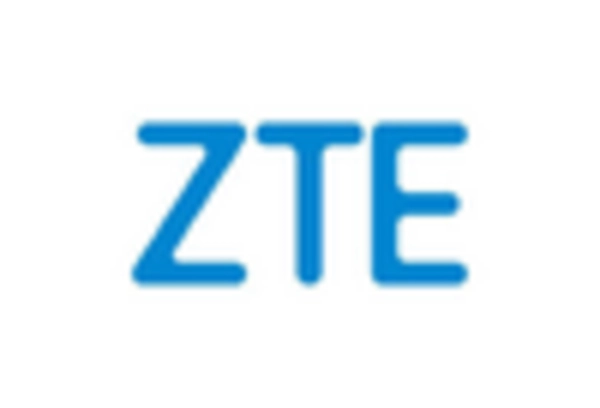Increased Focus on Smart Cities
The Long-Term Evolution Market is increasingly influenced by the global trend towards smart cities. As urban areas seek to enhance efficiency and sustainability, the demand for advanced telecommunications infrastructure becomes critical. Smart city initiatives often rely on LTE technology to support various applications, including traffic management, public safety, and environmental monitoring. Recent studies suggest that investments in smart city projects are expected to reach trillions of dollars over the next decade, creating substantial opportunities for the Long-Term Evolution Market. Telecommunications providers are thus motivated to upgrade their LTE networks to accommodate the data-intensive applications associated with smart city developments. This focus on urban innovation is likely to drive further growth and adoption of LTE technology.
Emergence of New Business Models
The Long-Term Evolution Market is witnessing the emergence of new business models that leverage LTE technology. As industries adapt to changing consumer behaviors and technological advancements, companies are exploring innovative ways to deliver services. For instance, the rise of subscription-based models and on-demand services is prompting businesses to invest in LTE infrastructure to ensure reliable connectivity. Recent market analyses indicate that sectors such as telemedicine, e-learning, and remote work solutions are increasingly reliant on LTE networks to function effectively. This shift towards digital transformation is likely to propel the Long-Term Evolution Market forward, as businesses recognize the necessity of robust telecommunications solutions to remain competitive. The adaptability of LTE technology to various business models may further enhance its market penetration.
Expansion of Mobile Applications
The Long-Term Evolution Market is witnessing a rapid expansion of mobile applications, which is driving the demand for LTE technology. As mobile app usage continues to rise, developers are increasingly optimizing their applications for high-speed networks to ensure seamless user experiences. Recent statistics indicate that mobile app downloads have surpassed 200 billion annually, highlighting the growing reliance on mobile platforms for various services, including e-commerce, social networking, and entertainment. This trend necessitates the deployment of advanced LTE networks capable of supporting high data rates and low latency. Consequently, telecommunications providers are compelled to enhance their LTE infrastructure, thereby fostering growth within the Long-Term Evolution Market. The integration of LTE technology into mobile applications is likely to further stimulate user engagement and retention.
Rising Demand for High-Speed Internet
The Long-Term Evolution Market is experiencing a notable surge in demand for high-speed internet connectivity. As more consumers and businesses rely on digital services, the need for faster and more reliable internet connections becomes paramount. According to recent data, the number of broadband subscriptions has increased significantly, with a projected growth rate of approximately 10 percent annually. This trend is driven by the proliferation of streaming services, online gaming, and remote work solutions, all of which require robust internet infrastructure. Consequently, telecommunications companies are investing heavily in LTE technology to meet this demand, thereby enhancing their service offerings and expanding their market reach. The Long-Term Evolution Market is thus positioned to benefit from this increasing consumer expectation for speed and reliability.
Government Initiatives and Investments
Government initiatives and investments play a crucial role in shaping the Long-Term Evolution Market. Many governments are recognizing the importance of advanced telecommunications infrastructure for economic growth and social development. As a result, they are implementing policies that promote the expansion of LTE networks, particularly in underserved areas. Recent reports indicate that several countries have allocated substantial budgets for the development of broadband infrastructure, with some investing billions in LTE technology. These initiatives not only enhance connectivity but also stimulate competition among service providers, leading to improved services and pricing for consumers. The Long-Term Evolution Market stands to gain significantly from these government-backed efforts, as they create a conducive environment for technological advancements and market expansion.


















Leave a Comment